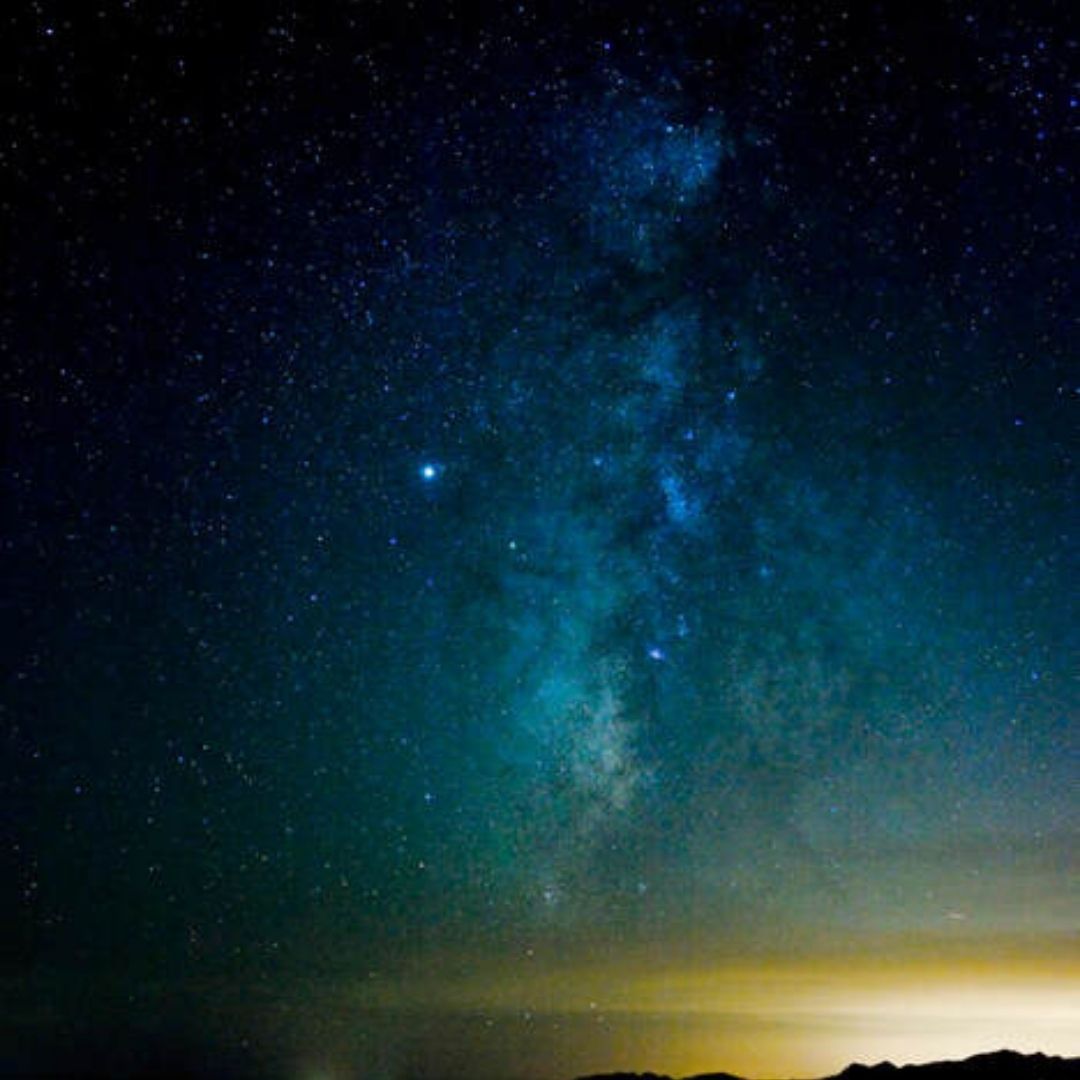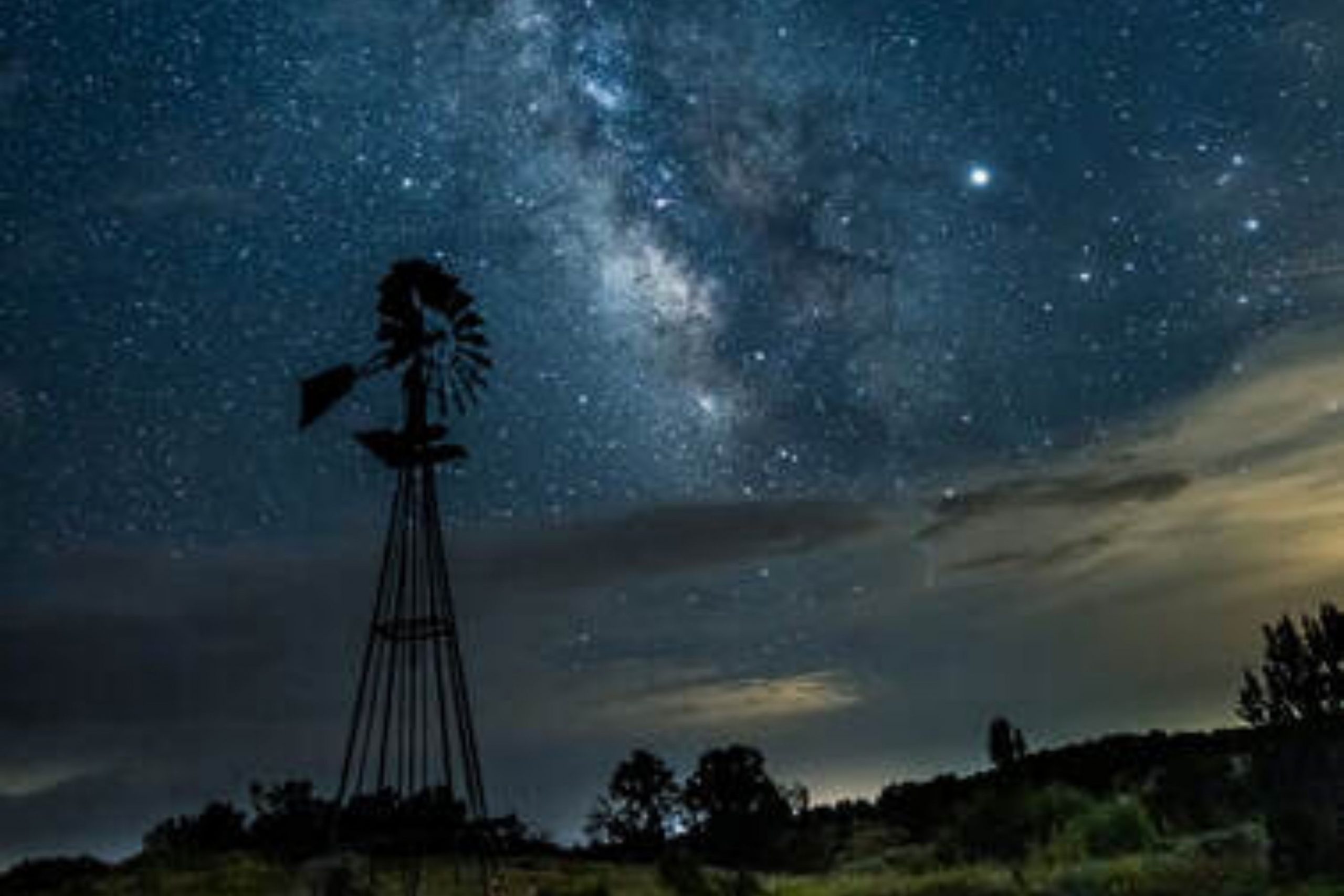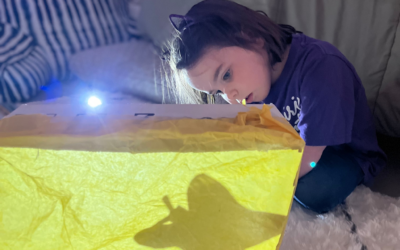Looking Up!
Winter creates ideal conditions for stargazing in New Mexico. Here’s when — and where — to experience the highlights of the cosmos.
Our connection with the stars above is as old as humankind itself. Thousands of years ago, our distant ancestors marveled at nearly the same night sky as rural New Mexicans do today. Catching a glimpse of eternity while camping in the isolated desert might be the perfect family escape from the stresses of our modern COVID-19 lives. If you think your summer camping trip under the stars was mind-blowing, wait until you see what the winter has to offer! Winter is the ideal season for stargazers, as the stars appear brighter and sharper than they do in other seasons.
New Mexico is among the best places on Earth for stargazing. This is due to our low population density, clean air and isolated deserts untouched by light pollution. Santa Fe is especially dedicated to protecting our connection with the stars through the Dark Skies program of the Santa Fe Conservation Trust. This project educates the community on the importance of seeing the stars in our night sky and the steps we can take to protect New Mexico’s skies against the tremendous threat of light pollution. In fact, according to the Santa Fe Conservation Trust, just one unshielded streetlamp can affect the star visibility of a person up to 125 miles away!
Our state houses several gold-tier and silver-tier certified Dark Sky Parks. In these parks, there is no artificial light for many miles around, allowing visitors to see the stars as they would have looked to our ancestors hundreds of years ago before wide-spread light pollution. As much of the world remains on COVID-19 shutdown, now is the best time to experience the stars in their primitive beauty, as it is a socially distanced activity for families to safely enjoy together.

The chilly winter season often creates the best conditions for stargazing, as the decreased moisture in the atmosphere means that the stars seem brighter.
“In the winter, the atmosphere holds less moisture than in the summer,” said Heidi Morris, president of the Pajarito Astronomers Club in Los Alamos. “This means the starlight can travel from the star to your eye with less scattering or absorption, and the stars will appear relatively brighter in the winter. If the stars aren’t twinkling much, you can also expect to see a crisp image for any object you want to view. Density fluctuations, or turbulence, in the atmosphere from storms and cold or warm fronts causes starlight to refract, or change the direction it is travelling in, which results in twinkling stars and poor ‘seeing.’ So, on a cold still night in the winter you can expect to see a bright and crisp starry sky.”
Not only is the visibility better during this time of year, but there are plenty of events coming up with great cosmic importance. After just a short drive outside of Santa Fe, you and your family can have a front row seat to the astronomical oddities!
The star views immediately outside Santa Fe, while not perfect, are still awe-inspiring in their own right. Santa Fe stargazers often visit the Galisteo Basin Preserve, Santa Fe Canyon Preserve, Bandelier National Monument, Valles Caldera National Preserve, and Fort Union National Monument.
If you’re willing to drive a little further to one of New Mexico’s remote Dark Sky Parks, there would be zero light pollution. Some of New Mexico’s Dark Sky Parks are Clayton Lake State Park, Chaco Culture National Historical Park, the Cosmic Campground International Dark Sky Sanctuary, and Salinas Pueblo Missions National Monument. The Capulin Volcano National Monument is a gold-tier park with some of the best views in the state. From the base of the ancient volcano, visitors can look up to the night sky and gaze upon a seemingly endless sea of stars. While not a Dark Sky Park, El Malpais National Monument has wondrous skies at night and exciting lava tube caving during the day.
Whether you’re in your backyard or a hundred miles deep into the remote desert, viewing one of these amazing celestial phenomena is an experience you and your children will forever cherish
Upcoming Events
On the early morning of Nov. 30, the moon will become faintly dimmer as it passes through the Earth’s outer shadow. This event is called a penumbral lunar eclipse. This is the last lunar eclipse of 2020, as well as the year’s longest lunar eclipse. Viewers should turn their eyes to the sky around 2:30 a.m. on Nov. 30. It lasts for around four hours and peaks at around 4:40 a.m.
On Dec. 13 and 14, stargazers can spot the Geminids Meteor Shower, which is one of the greatest meteor showers and certainly the most reliable. Interestingly, this annual meteor shower is a recent phenomenon, first noted in the mid-1800s with only about a dozen meteors per hour. Since their initial sightings, this meteor shower has blossomed into a breathtaking phenomenon with up to 100 bright, yellow-tinted meteors per hour. There will be nearly a new moon on this night, so the sky will be dark and primed for an astounding show. The Geminids are especially a treat for families with young children, as this galactic show begins at around 9 or 10 p.m. The peak, however, is at 2 a.m. As you lay on your back facing the stars, point your feet towards the south and wait for the meteor shower to begin. It lasts until dawn, so prepare to watch meteors until you can’t stay awake a second longer.
On Jan. 2 and 3, 2021, the annual Quadrantids Meteor Shower will reach its peak. During this meteor shower, viewers can marvel at glowing fireball meteors rushing across the sky. There are as many as 60 to 200 meteors per hour at the shower’s peak under ideal conditions. These fireball meteors emit great explosions of vivid colors and bright light. For best viewing, NASA suggests viewers lay flat on their backs looking upwards with feet facing the northeast. After your eyes adjust to the darkness, you can start watching for the meteors.
On Jan. 24, Mercury will be at its greatest eastern elongation. This is the best time to view Mercury in the night sky. Download the Star Walk app before heading off on your family’s astronomy adventure. By simply pointing your phone at the sky, this handy app shows you the names of planets, stars and constellations. It is a must-have for any curious stargazer!









